The last thing you need is to align another aiming point with the existing three focal planes of using irons. You don’t need to marry a red dot and irons to get a co-witness.
So, what is a co-witness and how do you get it with a red dot sight?
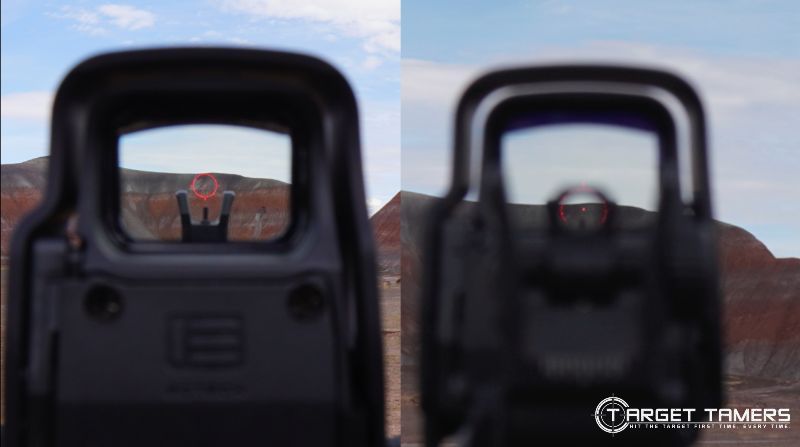
A co-witness means to see and use iron sights through the viewing window of a red dot sight (RDS). The term to “co-witness” is sort of a misnomer as the RDS and irons are independently zeroed and engaged. The co-witness type acquired largely depends on the mounting height of the RDS.
To figure out which co-witness suits your purposes, this guide explains co-witness types, pros and cons, and how absolute vs lower 1/3 co-witnesses stack up against each other.
What is Co-Witness?
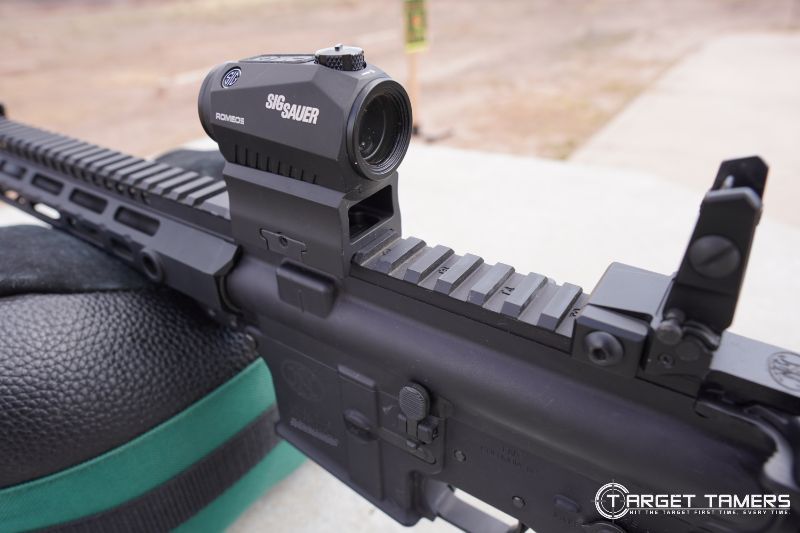
A co-witness is the relationship of how iron sights are seen through a red dot sight determined by mount height. There are two common co-witnesses: absolute and lower 1/3. The third, less common, co-witness is a lower 1/3 height with an absolute co-witness - achieved by dropping your cheekweld.
What is Co-Witness Height?
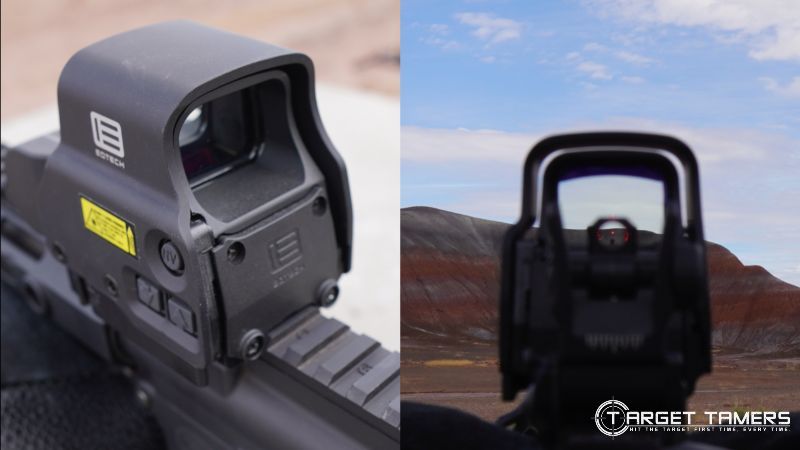
The co-witness is determined by the mounting height of the red dot sight. This includes the thickness of the mounting plate on a handgun and the mount height and spacers (if applicable) on a rifle needed to mount a red dot sight. The mounting height determines how the sights are seen through the red dot sight field of view (FOV).
Absolute Co-Witness Height
An absolute co-witness puts the iron sights in the center of the FOV (viewing window) providing apparent alignment between the sights and the dot of the red dot sight. Absolute co-witness mounts are shorter in height than lower 1/3 co-witness mounts putting the irons at the same optical height of the red dot.
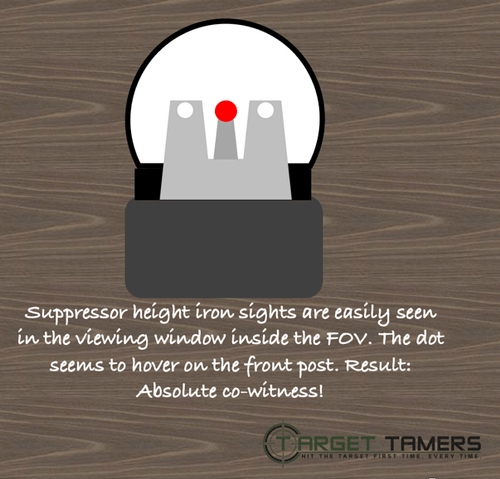
Suppressor height iron sights are taller but take up a good portion of the FOV and can block the target. Certain design elements of suppressor height irons may help maintain a wide FOV without blocking the target. Due to the taller heights of suppressor sights, they provide an absolute co-witness with pistol red dots.
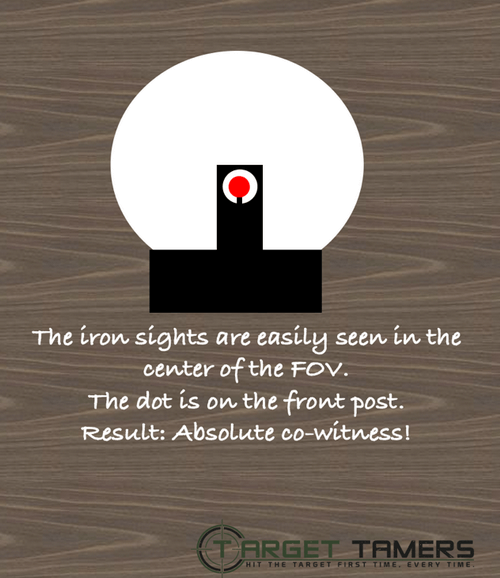
The absolute co-witness has a shorter red dot sight mount than a lower 1/3 co-witness mount. This height is usually around 1.41”. The irons can be seen in the center of FOV. The dot will seem to hover right on top of or on the front post as seen through the rear aperture.
Absolute Co-Witness Pros & Cons
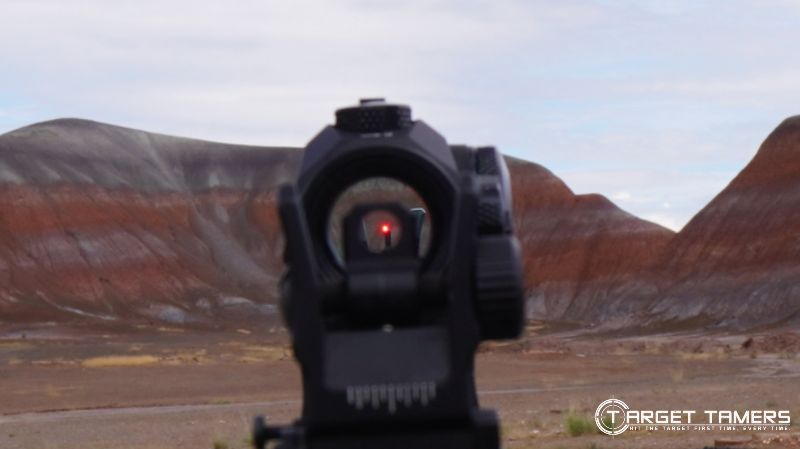
Pros:
- High visibility of iron sights through FOV
- Good for lower cheekwelds
- Consistent cheekwelds between use of both sights
- Flip-up iron sights can be flipped down*
Cons:
- Sights may cover up target or good portion of FOV
- Sights can be distracting inside the FOV when using RDS
- Bulky hearing protection can inhibit correct weld
*If an absolute co-witness is desired, using flip-up BUIS types are a great solution to cluttered, distracting FOVs when using the red dot.
Lower 1/3 Co-Witness Height
A lower 1/3 co-witness puts the iron sights in the lower third of the FOV (viewing window) making for a less obstructed FOV. The dot stays above the sights. Lower 1/3 co-witness mounts are taller than absolute co-witness mounts to allow the red dot sight to sit higher over the iron sights.
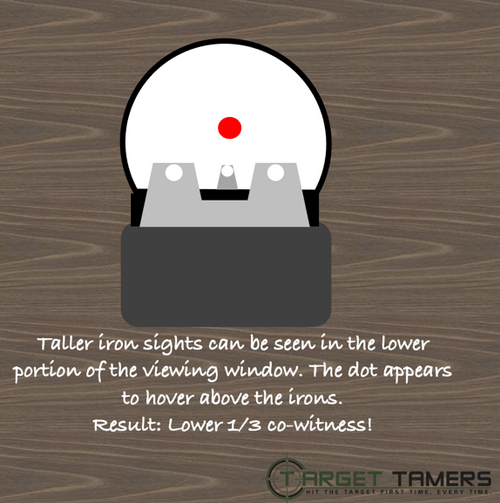
Since optic-ready pistols are trending, included stock irons are usually made taller. This is not a rule but is something to verify when buying a new handgun. These sights are just tall enough to be seen with an ultra-low red dot sight to provide a co-witness in the lower 1/3.
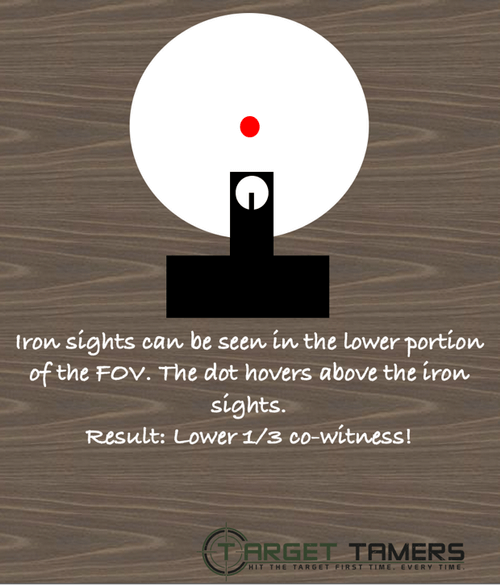
To get a lower 1/3 co-witness with AR sights, a red dot should have a taller mount that provides a 1.54” or 1.63” (approx.) height from the top of the rail to the optical center of the RDS. This puts the iron sights in the lower third portion of the FOV and the dot remains above the irons.
You might also notice that you’re seeing the top third of the sights in the lower portion of the window – just a tid bit for you!
Lower 1/3 Co-Witness Pros & Cons
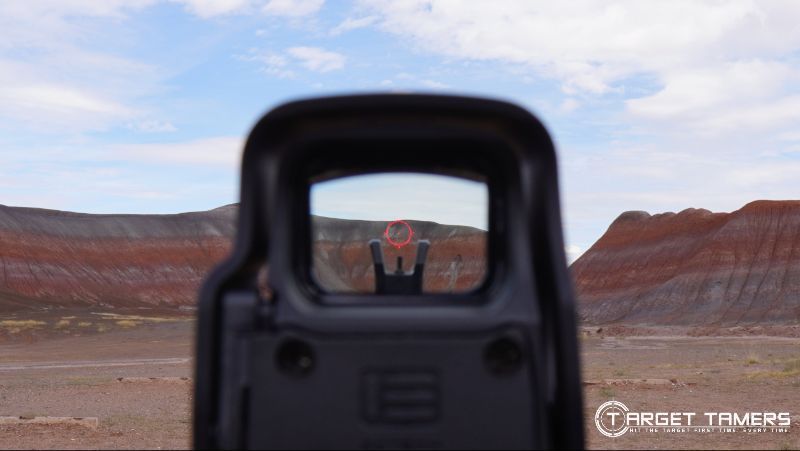
Pros:
- Cleaner, unobstructed FOV
- High dot visibility as it sits higher than iron sights
- Easier to use with bulky ear protection
- Slightly higher cheekweld
- Can keep flip-up sights engaged (up) at all times
Cons:
- Must change cheekweld to engage iron sights
Lower 1/3 with an Absolute Co-Witness Height
The irons are still in the lower third portion of the FOV. The only difference is that you are changing your cheek weld to a lower position. When you do that, the dot follows with you to align itself in an ‘absolute co-witness’ position – just in the lower portion of the FOV.
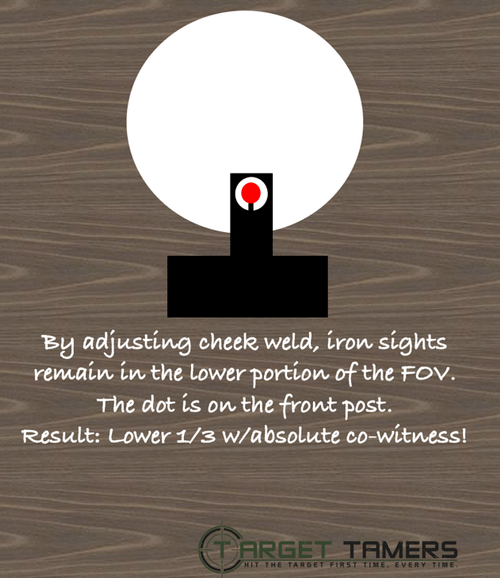
This is achieved with a lower 1/3 co-witness mount. By adjusting the cheek weld lower with the red dot sight activated, the dot follows suit and drops into the absolute co-witness alignment. Move back to a higher weld, and a lower 1/3 co-witness is maintained - irons in the bottom portion of the FOV and the dot centered above them.
Lower 1/3 with Absolute Co-Witness Pros & Cons
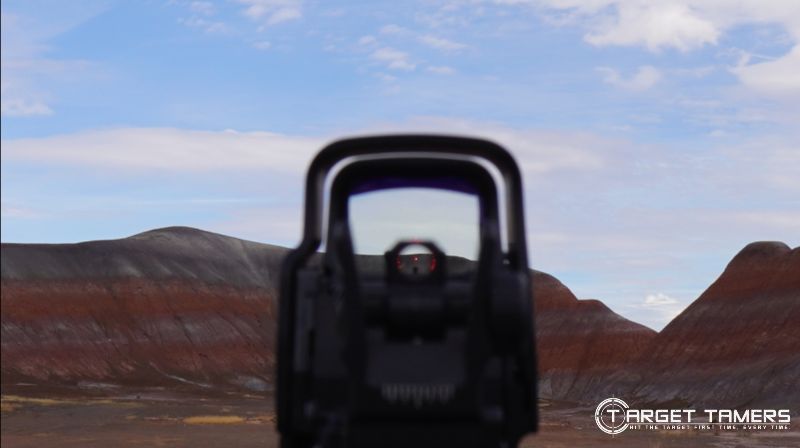
Pros:
- Achievable with change in cheekweld
- Maintains lower 1/3 co-witness
- Maintains uncluttered FOV
Cons:
- Requires a change in cheekweld to acquire
- Forces visibility to the lower portion of the FOV
Low Profile Mounts & Stock Irons Co-Witness
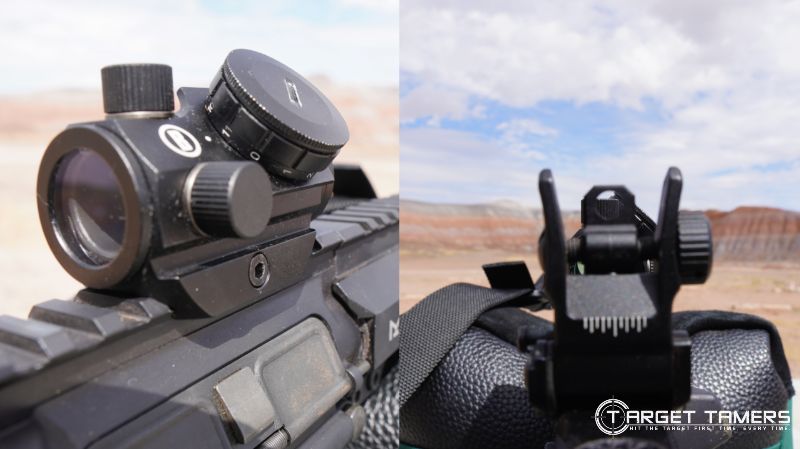
Not all mounts and standard iron sights can co-witness with a red dot sight. Since height determines the type of co-witness achievable, low profile RDS mounts and BUIS sights are not compatible as neither are standard height irons and pistol red dot sights, typically.
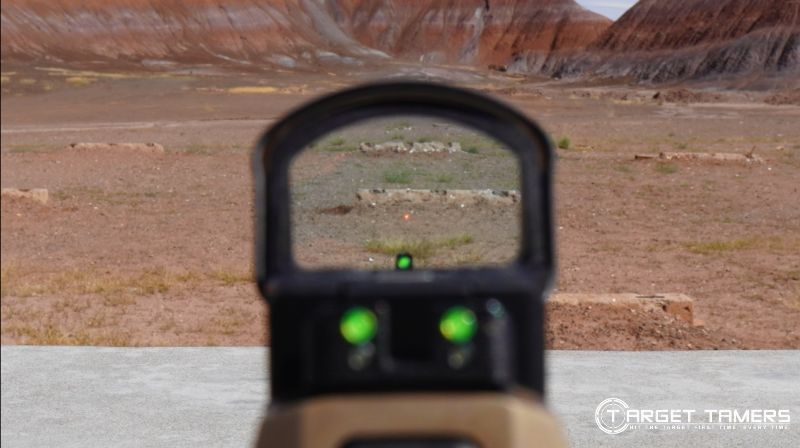
If you cannot see the iron sights through the FOV (viewing window) of the RDS, you cannot co-witness, and short of removing the RDS, your irons are useless.
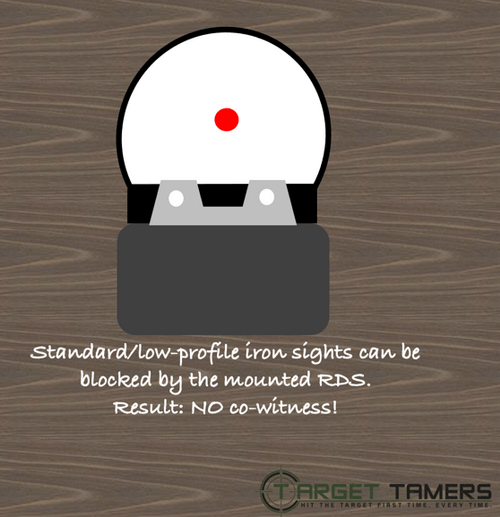
Generally, the stock irons that come on a pistol are standard height irons. They are usually too short to be seen as they are completely blocked by the mounted red dot sight. To co-witness, they would require replacement. However, manufacturers are releasing ultra-compact, low-profile red dots that allow for use with standard height handgun iron sights like the Holosun EPS Carry RDS.
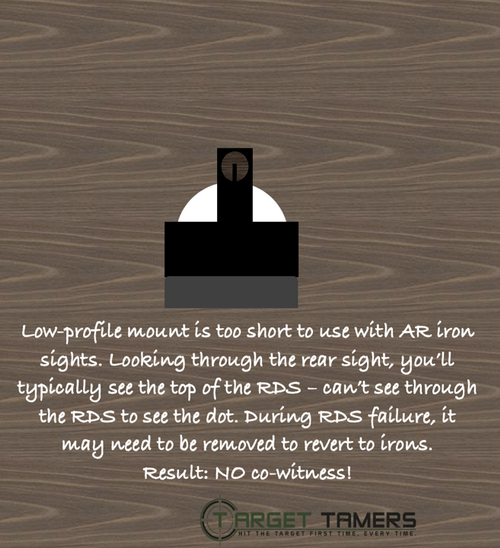
Low-profile mounts do not co-witness with standard AR sights. If the irons are at a 1.5” height, low profile mounts tend to put the optical center over the bore at a much shorter height. This varies between manufacturers but tends to be in the range of 0.5-0.85”.
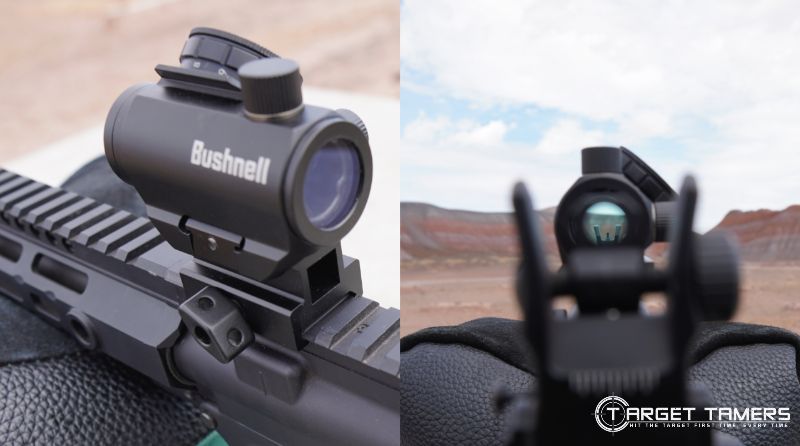
With the rear sight flipped up, you won’t see through the glass of the RDS – just the top or over the top of the RDS. With the rear sight flipped down, you’ll see the front sight that is blocking the FOV. A higher mount would be needed for the RDS like a UTG 0.83” riser for an absolute co-witness or a UTG 1” riser for a lower 1/3 co-witness.
Absolute VS Lower 1/3 Co-Witness
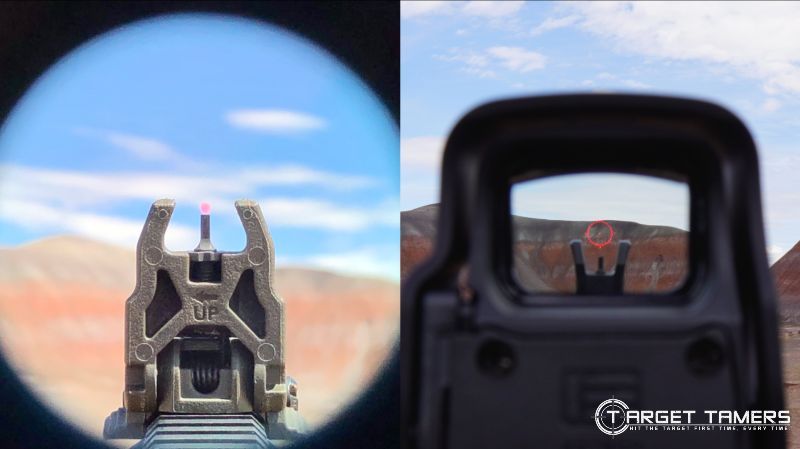
| Cowitness Type | Mount Height | Pro | Con | Best For |
|---|---|---|---|---|
| Absolute | Shorter than lower 1/3 Around 1.41” RDS sits at the same height as iron sights | Consistent weld to effectively use either sighting system High iron sights visibility | Iron sights clutter the FOV Lower weld may interfere with bulkier "ears” | Use with flip-up sights for running them down during RDS operation but can be flipped up when needed |
| Lower 1/3 | Taller than absolute mount Around 1.63” RDS sits higher than irons | Uncluttered FOV with iron sights in the lower portion High dot visibility as it sits over sights | Requires two welds to effectively use either sighting system | Flip-up sights or fixed sights can remain engaged, up, 24/7. |
Is Co-Witnessing Necessary?
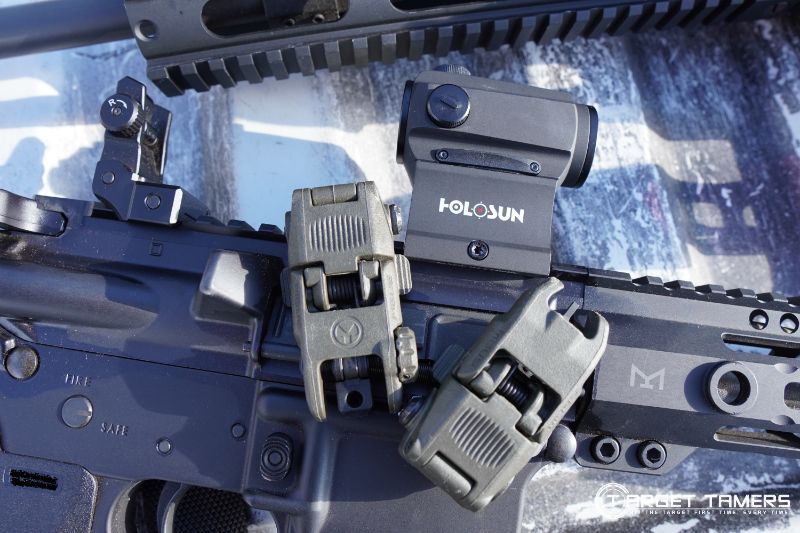
Though red dots are easier to use than iron sights and provide better accuracy, they require power. As such, they're prone to electronic failure due to battery problems and non-waterproof models may malfunction in inclement weather. Co-witnessing allows back-up iron sight use in case of red dot sight failure.
Mounts to Consider
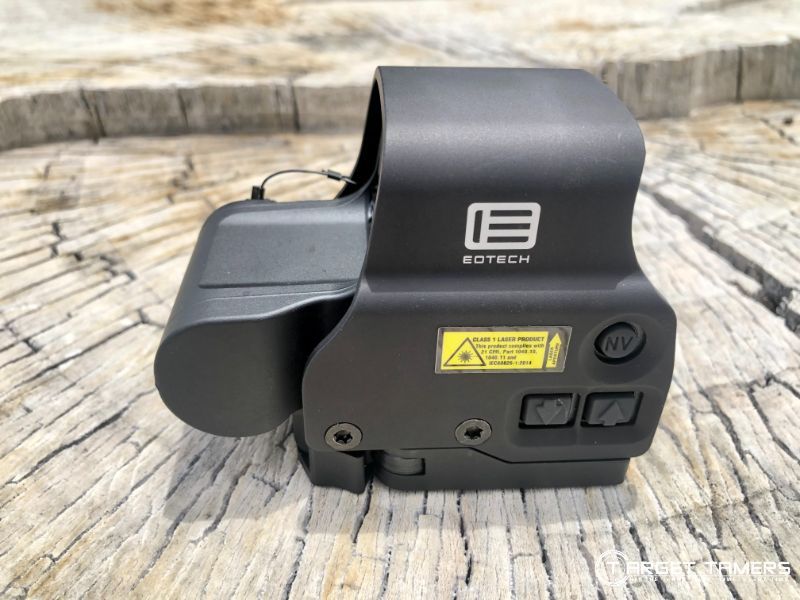
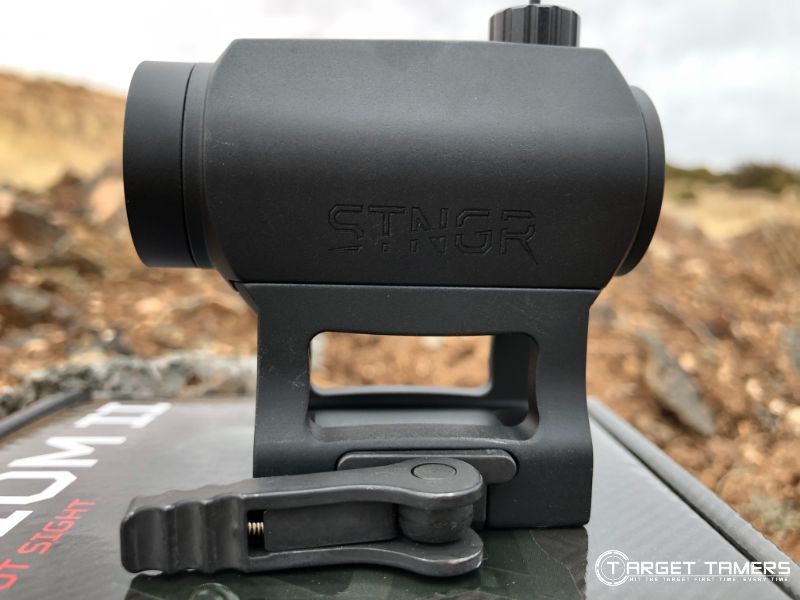
Quick detach/quick release mounts are convenient to use as they provide rapid removal of the RDS in case of failure. Removal is not necessary if you can see still your irons to co-witness through the RDS. Co-witnessing will save time and ensures immediate engagement in an emergency even when RDS failure occurs.
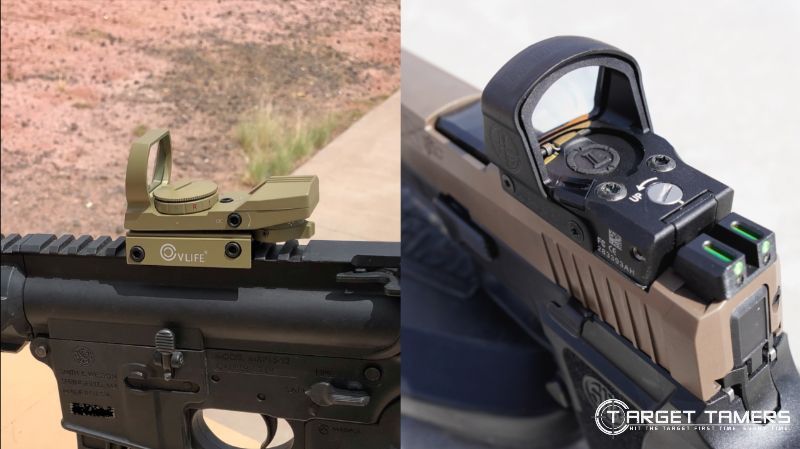
Red dots that are installed directly to the slide on a handgun or that require a tool to provide mount tension to the rail on an AR-15 are inconvenient to remove in an engagement if they fail. However, they are valuable for their stronger, reliable mounting integrity on a rail or on a slide.
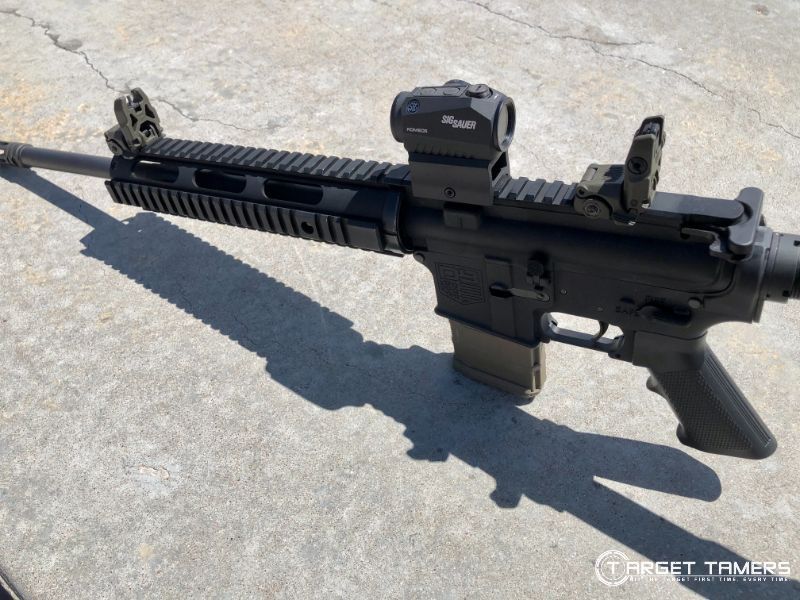
In case of failure, immediately revert to iron sight use as you see them through the RDS. Don’t forget you need to zero your irons first!
Why Co-Witness at all?
The purpose of co-witnessing is not to use the two sighting systems together. It’s to ensure that you can effectively use your irons in case of RDS failure without having to take the extra and possibly time-consuming step of removing the red dot.
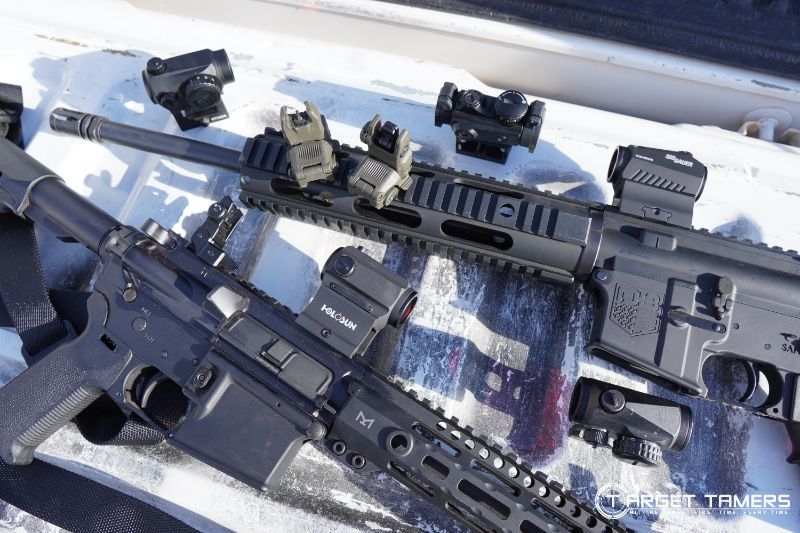
So, why not just use iron sights all the time?
You might be one such person who does. But aging eyes may not see like they used to, and faster target acquisition and accuracy are advantages of using red dots. There are other advantages too, which you can discover in our comparison of iron sights and red dots here.
But as with anything, it takes practice to effectively transition to your irons if you have a red dot sight mounted to your setup. With an absolute, it should be easier given that a consistent weld is used for both. With a lower 1/3, some range time is in order to get used to that transition. Check out our guide on how to aim iron sights for more information on what that practice should entail.
Don’t forget to zero your irons and zero your RDS independently!
Further Reading



